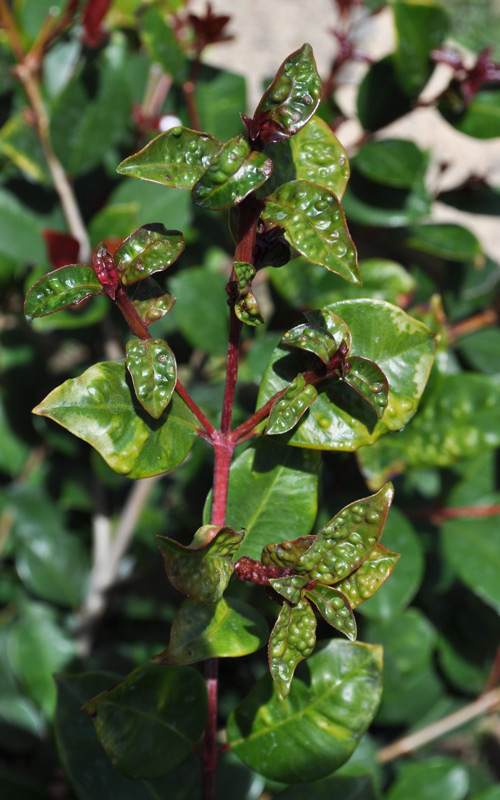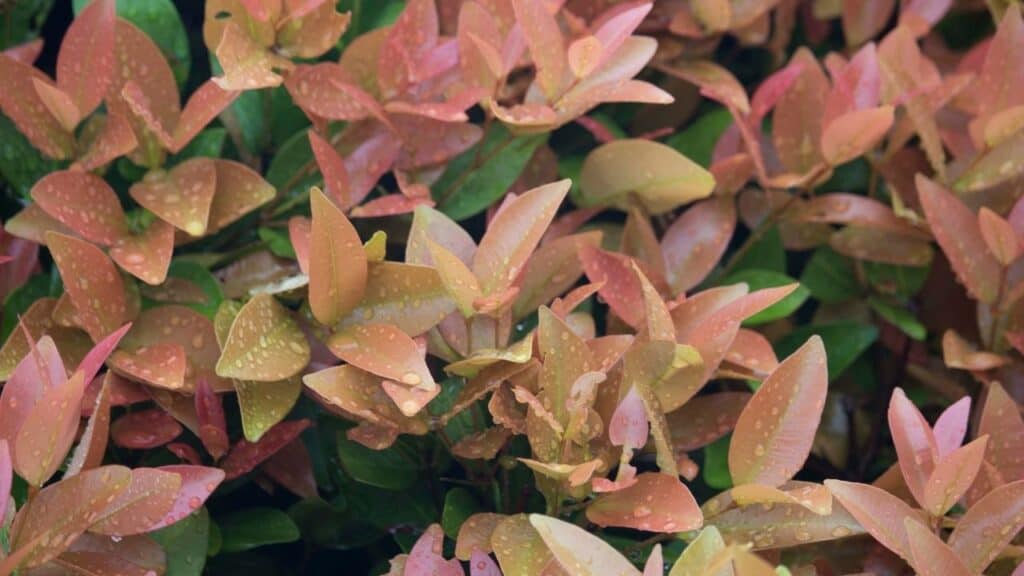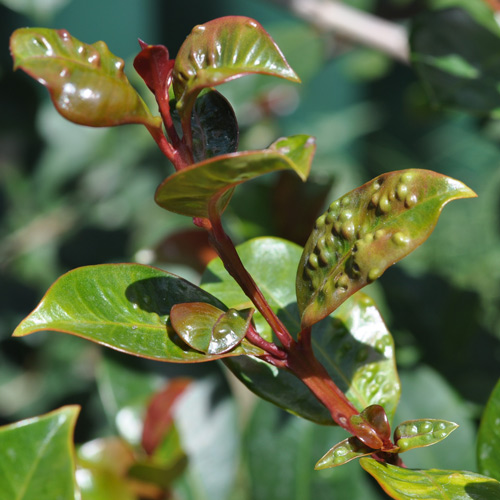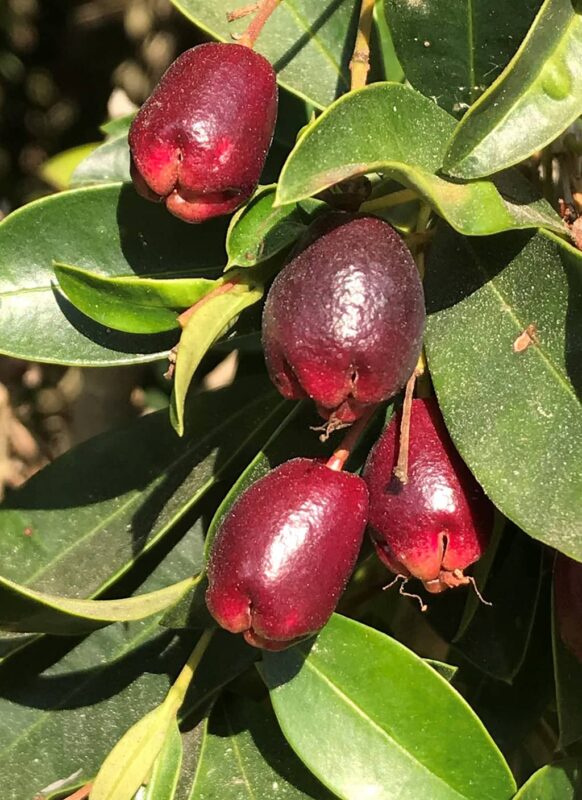
eugenia psyllid (Trioza eugeniae ) on brush cherry (Syzygium
Plant Problem 6: Snails and Slugs Frequently Asked Questions about Eugenia Plant Problems How do I get rid of Eugenia psyllids? What is an insecticidal soap for plants? The Final Word Eugenia Plant Problems: Understanding the Culprits

Eugenia trees Eugenia's Pinterest
What is an Eugenia Topiary plant? Eugenia Topiary Care & Growing Guide 1. Light Requirement 2. Water 3. Climate 4. Soil 5. Temperature 6. Repotting 7. Speed of Growth 8. Height and Spread 9. Flowers 10. Trimming How to get Eugenia Topiary Plants to Flower Common Eugenia Topiary Diseases Conclusion What is an Eugenia Topiary plant?

Indoor plants
Before applying fertilizer to your Eugenia plant, it's crucial to water it thoroughly. This helps prevent fertilizer burn, which occurs when the plant's roots absorb too much fertilizer too quickly. Next, follow the instructions on your chosen fertilizer product. Some fertilizers come in liquid form that you can mix with water and apply.

How to get rid of Eugenia Psyllids Kings Plant Doctor
There are a few plant problems eugenias, also called Australian brush cherry or Syzygium, can experience. I've had a few of these problems with my eugenias, so I want to make it easy for you to diagnose what could be wrong with your evergreen shrub. Plant Problem 1: Eugenia Psyllids A psyllid is a sap-sucking insect that commonly plagues eugenias.

Eugenia Plant Problems — 6 Things to Know
Common Eugenia Plant Pests. 1. Spider Mites. Spider mites are tiny insects that suck the sap from leaves, causing a stippled appearance and eventually leading to leaf drop. They are most common during hot and dry weather conditions. 2. Mealybugs. Mealybugs are small insects that feed on the sap of plants, causing yellowing and wilting of leaves.

Eugenia Plant, आयुर्वेदिक पौधा Rajasri Nursery & Landscaping Works
One of the most common reasons your Eugenia plant may be dying is due to a lack of proper watering. Eugenia plants require consistent moisture to survive, but overwatering can also lead to root rot and other problems. If you notice that the leaves are turning yellow or brown and falling off, it could be a sign of underwatering.

Eugenia Garden Care A Guide to Maintain and Shape the Evergreen
October 6, 2020 by Allyriane Fortin A lovely dense row of Eugenia forms a fence in any regular gardens to provide privacy for the homeowners. This lustrous leaved shrub creates an adorable hedge and potted plant to the landscape. The fast-growing privacy plants are often used for topiaries as well.

Gardening tips for Problems Kings Plant Doctor
Where to Plant Because it is so easy to trim to shape, a eugenia shrub is often used as a specimen plant for topiary work. If you don't want to spend the time, the eugenia works equally well as a shrub that is very low-maintenance. If you want to hide an ugly building or neighbor's wall, then the eugenia makes a great living hedge or fence.

Eugenia Plant, For Outdoor, Aluminium And Allied Centre (TVLA) ID
Eugenia plants are susceptible to a range of issues, including insect infestations and fungal diseases. Let's explore some of the most common problems you may encounter with your eugenias. Plant Problem 1: Eugenia Psyllids One troublesome insect that often affects eugenias is the psyllid.

Ornamental Plants For Sale Cebu Eugenia Plant
Steps: Choose a pot that is one size larger than the current pot of your Eugenia plant. Fill the pot with well-draining potting soil. Remove the Eugenia plant from its current pot and gently loosen the roots. Place the plant in the new pot and fill it with potting soil around the roots. Water the plant thoroughly.

Eugenia Tree Santa Barbara Beautiful
Natural Treatment Spray hedges at the start of spring (as soon as new growth emerges) thoroughly Enspray99 Oil to help keep numbers down. Repeat at 7 day intervals depending on the size of infestation. Prevention is often better than cure, start spraying as soon as new growth appears. Other Treatment

Eugenia planta, Planta Eugenia【 Eugenia myrtifolia 】+ FOTOS
Correct Care Correcting underlying cultural problems will reverse most instances of leaf loss in Eugenia topiaries, although it may take time for the new growth to emerge. Eugenia shrubs perform best when grown in full sun with some light afternoon shade in hot, dry inland climates.

Understanding and Solving Eugenia Plant Problems A Comprehensive Guide
Plant > Common Eugenia Plant Diseases: How to Identify and Treat Eugenia plants are popular for their ornamental value and edible fruits. They are also known for their resilience to different weather conditions, making them a favorite of gardeners.

Eugenia Plants Team La
Frequently Asked Questions What is Eugenia Topiary plant? How often should I water my Eugenia Topiary plant? What type of soil is best for Eugenia Topiary plant? How often should I fertilize my Eugenia Topiary plant? How much sunlight does Eugenia Topiary plant need? How often should I prune my Eugenia Topiary plant?

The Colorful Eugenia Plant Flowerland
The common problems with Eugenias can be broadly categorized into two groups - pests and diseases. Eugenia plants attract a variety of insect pests. Psyllids, in particular, are a common and persistent problem. These tiny insects suck the sap from the leaves causing them to curl and distort.

Eugenia Hedge Spacing Growing Eugenia Shrubs For Privacy Hedge
Don't let Eugenia plant problems dampen your horticultural aspirations! Whether it's stubborn pests or mysterious leaf spots, conquering these challenges is the key to reviving the vitality of your Eugenia. Prepare to delve into the world of Eugenia plant problems and unlock the secrets to a thriving green sanctuary.